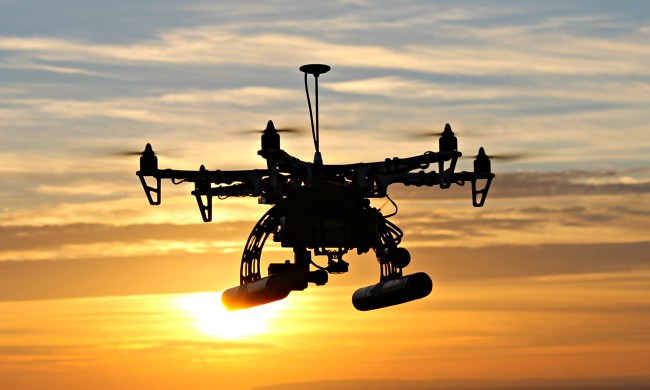If there’s any organization well ahead of the new and futuristic patent curve, it’s no doubt the gigantic aerospace company, Boeing. From plans for an airplane seat capable of allowing people to comfortably lean forward while they sleep, to an incredibly efficient laser-powered nuclear fusion engine, Boeing has its sights set on all kinds of revolutionary technology.
For its latest ambitious endeavor, Boeing recently submitted a patent for a new kind of drone capable of transforming into a submarine upon entering a body of water. Before you get too excited, do bear in mind Boeing’s amphibious drone may never actually see the light of day — like so many other outrageous patents — but even so, it’s still fun to speculate just how much fun it would be to pilot one of these.
According to the patent, which was discovered by the keen eye of YouTube user PatentYogi, Boeing’s land to sea drone requires the help of a host aircraft in order for it to successfully launch. After it’s propelled into the air by its host, the drone then navigates to either a predetermined or happened-upon location in an ocean, lake, or other body of water before diving to the surface. Once it breaches the water source, it then begins to dismantle its propellers and wings to allow it to move through the water more easily. Boeing intends for this to occur by outfitting the drone with exploding bolts or glue that dissolves when it comes in contact with salt water.
After the drone successfully reaches its underwater destination and gathers necessary information, it would then propel itself to the surface in order to transmit all relevant data back to the user. At this point, the drone also sends out a signal for pickup, though Boeing does say it intends to eventually develop a way for the drone to relaunch itself back into the air.
While Boeing’s submarine drone idea will most likely never come to fruition, any working model plans to be used strictly by the military. Suited for use in situations where sending human soldiers is either not feasible or too dangerous, the drone could gather valuable intel without putting any lives in danger. Popular Science also points out that a multi-talented drone such as this would have the ability to avoid anti-aircraft weaponry, as well as a host of obstacles such as underwater nets or various other harbor defenses.
Even if Boeing decides not to move forward with production of its land to sea drone, its filed patent at least shows the craft is technologically feasible. In the mean time, professional tinkerers will just have to stick to bugging their neighbors with airborne-only drones instead of exploring any backyard pools.



